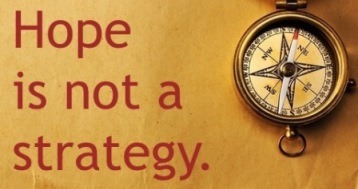 Last month my annual GYN exam revealed something growing where it shouldn’t be. (That’s creepy news to hear!) An ultrasound didn’t provide many clues, and an MRI only confirmed there was…well…a large mass near my uterus.
Last month my annual GYN exam revealed something growing where it shouldn’t be. (That’s creepy news to hear!) An ultrasound didn’t provide many clues, and an MRI only confirmed there was…well…a large mass near my uterus.
My doctor assured me that none of the tests indicated that scary “C” word — but it couldn’t be ruled out a hundred percent, either. Clearly uncomfortable with the status quo he said, “You’re one of those cases that cause us docs to scratch our heads and say, ‘What do we do now?’’”
Without hesitation I said, “You know, I’m not emotionally attached to my uterus. At this stage of my life, it serves no useful purpose. How about if we just take it out?”
So I had a hysterectomy on Monday (which is why my weekly blog skipped a beat). Problem solved (and I feel great, by the way).
But as a regular reader of my words, you likely know that this post isn’t about my health. It is, as always, about the metaphor.
EMOTIONAL ATTACHMENTS
Once I spoke the words “not emotionally attached” and “no useful purpose” I couldn’t get them out of my mind. Having made the decision to ditch a few body parts with surprising ease, I began to see everything through new eyes.
For a month I’ve been asking myself, “How many other things in my life serve no useful purpose? Am I emotionally attached to them?”
I came upon six years of Hemingway journals, which I use for my weekly planning. Yes, six years. (You’re laughing at me now, aren’t you!) And I asked myself, Do these serve any useful purpose? No. So why am I keeping these? Am I emotionally attached to them? Yes. Why? Because that’s six years of work on those pages!
As I swapped the winter clothes in my closet with spring clothes, I noticed a sweater I bought in Paris two years ago, and have only worn once. (It looked a lot cuter in that Paris boutique!)
Then there’s the straw handbag I bought in Rwanda but I’m too lazy to change purses all the time, so I never use it. But I remember so clearly the face of the woman who made it!
And my books! I may still have every book I’ve ever read.
Turns out I own lots of things that serve no useful purpose. The problem is, I’m emotionally attached to most of them.
So I’ve been asking myself quite a few questions:
- What meaning have I attached to these “things?” What do they represent to me?
- What am I holding on to?
- Am I holding on to the past? Or preparing for the future?
- Are these attachments keeping me from something new and different?
- Would it free up some space – both physical and emotional – if I parted with a few of these belongings?
Now, I’m not talking about things with deep sentimental meaning, like my children’s kindergarten drawings, my aunt’s antique wooden bowl, or a necklace my mother gave me. That’s different. And I feel great compassion for the many women who have had to sacrifice precious body parts before they outlived their usefulness, as mine had. That’s real sorrow.
THE PAST OR THE FUTURE
I’m talking about things and thoughts, belongings and beliefs, which might be keeping us in the past instead of preparing us for the future. Do these things, thoughts, belongings and beliefs represent a resistance to change or grow?
Are there things — tangible and intangible — personal or business — that you are holding on to, without knowing why? See where these questions take you:
- Are you emotionally attached to a certain product or service you offer, that may no longer meet the needs of your market?
- Are you emotionally attached to an employee that can’t keep up now that the company has grown? (I’ve seen this happen, and it’s painful!)
- Are you emotionally attached to a client that may not really fit your business model anymore?
- Are you emotionally attached to a belief about yourself that is holding you back? (I call these “stories.”)
- Are you emotionally attached to a relationship that prevents you from being open to a new one?
- Are any of these tangible “things” or intangible beliefs taking up valuable space (in your closet, in your mind, in your heart)?
- Is what you think and believe – about yourself or your business — positioning you for the future or holding you in the past?
I’m still mystified as to why it is more difficult for me to part with a book than it was to part with my ovaries! But I’m on a new journey now to reexamine what I’m holding on to and what that emotional attachment might keep me from exploring.
I kissed my Hemingway journals goodbye and put them in the recycle bin. They will become useful once again in a brand new shape and form (paper towels? toilet paper?). I folded the Paris sweater neatly, and sent it on to the women’s shelter, along with the straw handbag and two dozen other clothing items. To another woman, these clothes will represent the new, the future.
You know what? I felt lighter.
I am creating space for something new to take shape. I hope you will too!
Take care,
P.S. I hope you’ll share your stories of creating space with me too, in the Comments section below. And if you like what you read, feel free to share.










